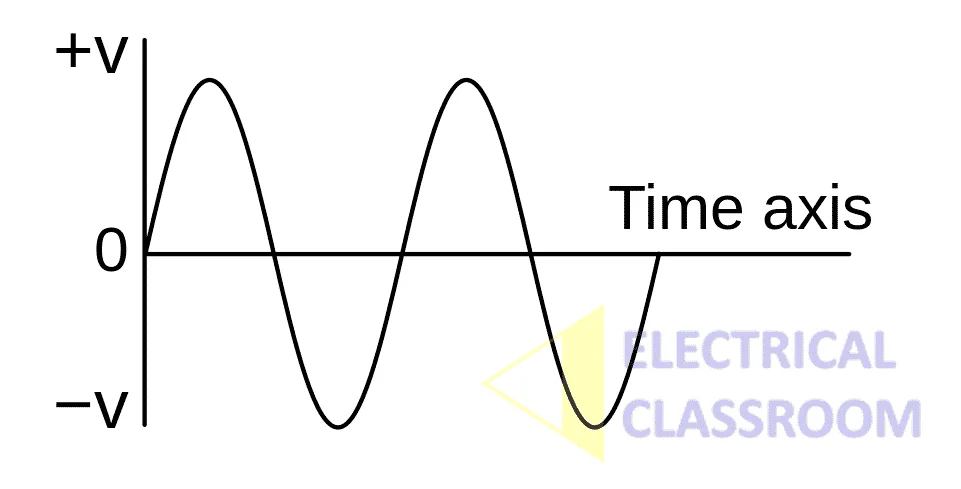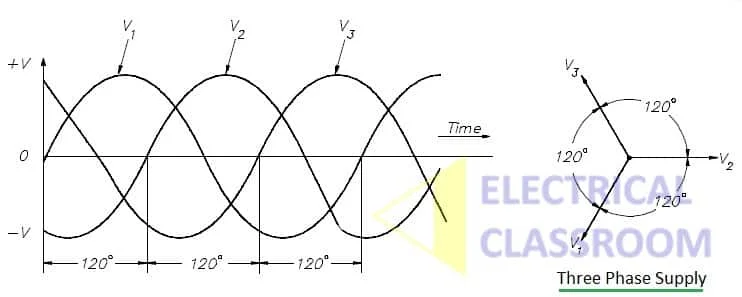Anyone who uses electricity and has heard of term: single-phase and three Phase, maybe trying to understand the difference between them. This article narrates the differences between a single-phase power supply and a three-phase power supply.
What is meant by phase?
Before getting into our topic, it is essential to understand the term phase. The word phase means a relative variation or change of state or a cycle. It may be the change in a state or anything with respect to time. In electrical engineering, phase refers to the pattern at which the sinusoidal voltage of AC supply shifts between its positive maximum and its negative maximum.
The three-phase supply consists of three sinusoidal patterns which are 120 degrees out of phase to each other. Single-phase supply consists of one of the three sinusoidal patterns in s three-phase along with neutral. Both single-phase and three-phase have roles for which they are well suited. At the same time, they are different from each other. The differences between single-phase and three-phase supply can be well understood from this article.
Single Phase power supply
An AC system in which all voltages vary at the same sinusoidal pattern is known as a single-phase system. It is basically a two-wire AC power system. One is the power wire, normally known as Line or Hotwire or phase and the other is neutral. The hot wire acts as a source of power and the neutral wire act as a return path. The neutral is tapped from the center tap of the star/wye connected secondary side of a service transformer. All home appliances and most of the low power consuming loads are powered by a single-phase supply. Normally single-phase power is used to serve residential power requirements.

Three Phase power supply
A three-phase AC electric system is a three-wire system consisting of three power circuits, with their sinusoidal voltage pattern varying 120 degrees apart from each other. A three-phase system has two configurations: Star(wye) and Delta. Star configuration is a 4-wire system: three wires for power and the fourth wire is neutral. Delta configuration is a 3-wire system: three wires for power. High-power industrial loads are powered by a three-phase supply.

Difference between single-phase and three-phase
- A three-phase supply is delivered using three wires (sometimes four wires depending on the connection – either star or delta). But the single phase is delivered using two wires.
- The key difference between single-phase and three-phase ac supplies is their power-delivering capacity. A three-phase supply can deliver more power than a single-phase supply.
- There are two types or three-phase configurations: star and delta. Whereas there is only one single-phase configuration.
- Three-phase supply can power a high load than a single-phase supply.
- Each phase of a three-phase supply is denoted as Red (R), Yellow (Y), and Blue (B) (sometimes as Black, Red, Blue or Brown, Black, and Grey – depending on region) whereas phase in a single phase is denoted as Line (L).
- A three-phase supply is more consistent than a single-phase supply.
- More power can be transmitted using three-phase when compared to a single phase.
- Three-phase can also serve as a single-phase when the load is powered from one of its phases and neutral. Each phase of a three-phase system can serve as an individual single-phase system.
- Three-phase power generation is more efficient than single-phase power generation.
- The power generated at any power station is three-phase.
Advantages of Single phase over three-phase.
A single-phase system is cheaper and less complex than a three-phase system. It is much suited for residential homes, hotels, etc. It can be used to power lights, dryers, heaters, and low-power motors. Transmission cost is lesser when compared to a three-phase system.
Advantages of three-phase over single phase.
A large amount of power can be transmitted using three-phase. Three-phase power is used to energize high-power industrial equipment at a lower cost when compared to a single phase. With an additional conductor, a much large amount of power can be transmitted to a longer distance.
For your information
The power generated at any power station is three-phase. Three-phase power is generated at higher voltages and transmitted to the load centers. Transformers are used to step down these voltages. At the service transformer, the neutral is tapped from the center tap of the star/wye-connected secondary side. Any phase of the generated and stepped down three-phase and the neutral tapped from the service transformer is used to distribute single-phase power to domestic consumers.
There is no power station that generates and transmits single-phase power. The power generated at the power stations is always three-phase. But single-phase power can be generated separately using single-phase alternators or converters.
Summary – Three-phase vs single-phase supply.
The three-phase supply consists of three sinusoidal patterns which are 120 degrees out of phase with each other. Single-phase supply consists of one of the three sinusoidal patterns in s three-phase along with neutral. An AC system in which all voltages vary at the same sinusoidal pattern is known as a single-phase system. It is basically a two-wire AC power system. A three-phase AC electric system is a three-wire system consisting of three power circuits, with their sinusoidal voltage pattern varying 120 degrees apart from each other. Three-phase supply can have either three wires or four wires. Single-phase supply is used to power small residential and commercial loads whereas a three-phase supply is used to power large industrial loads.
Very helpful!